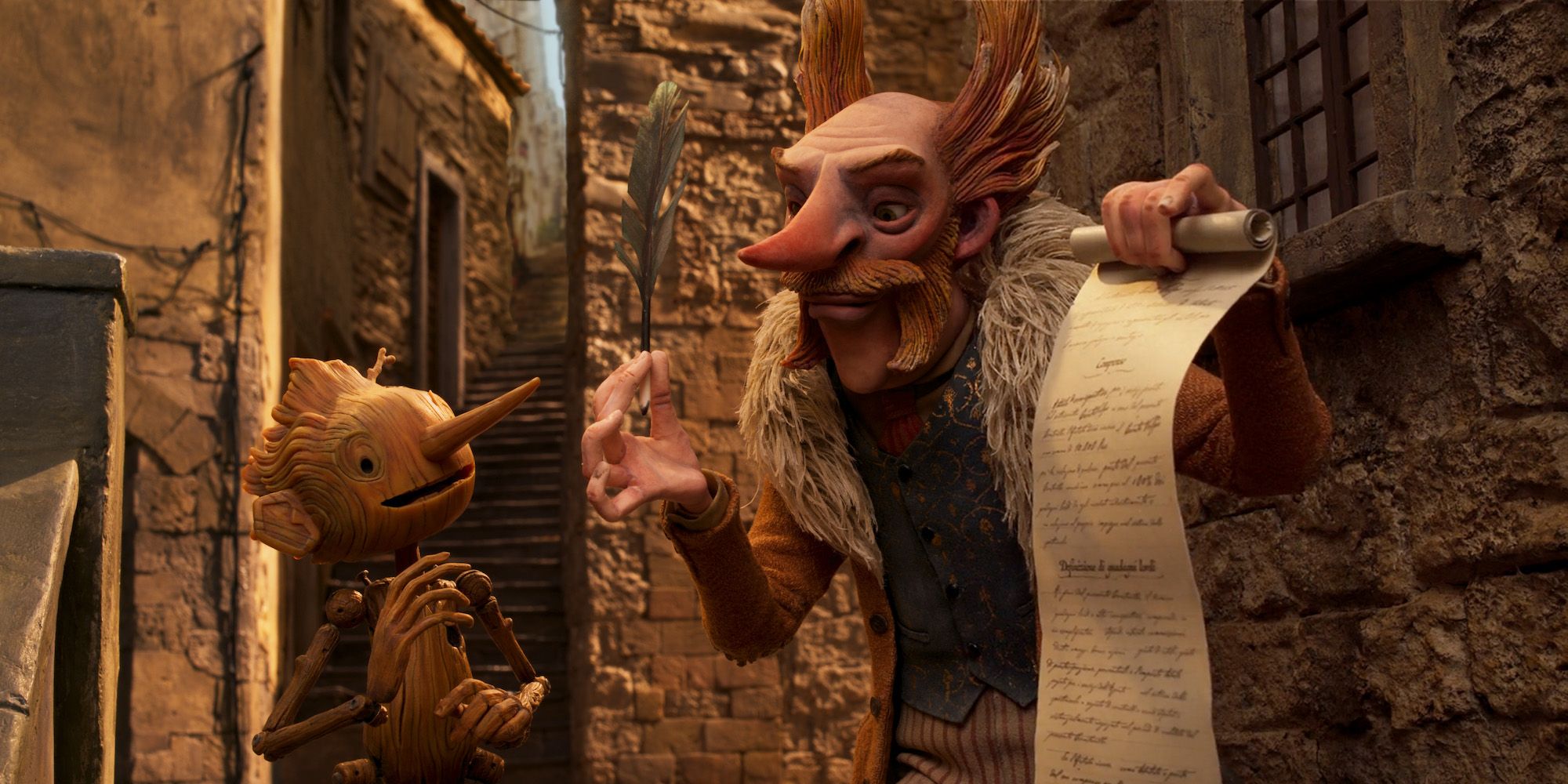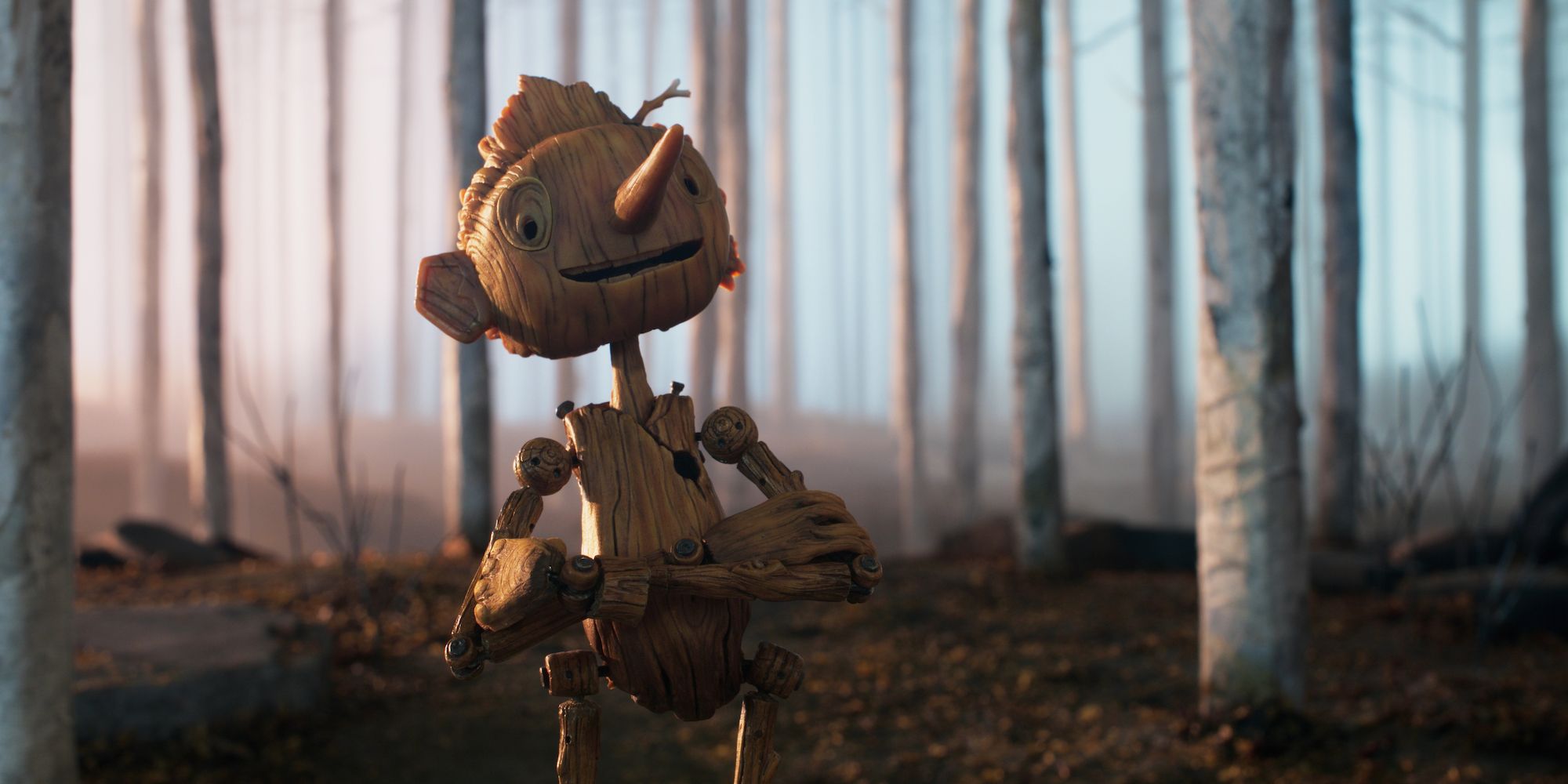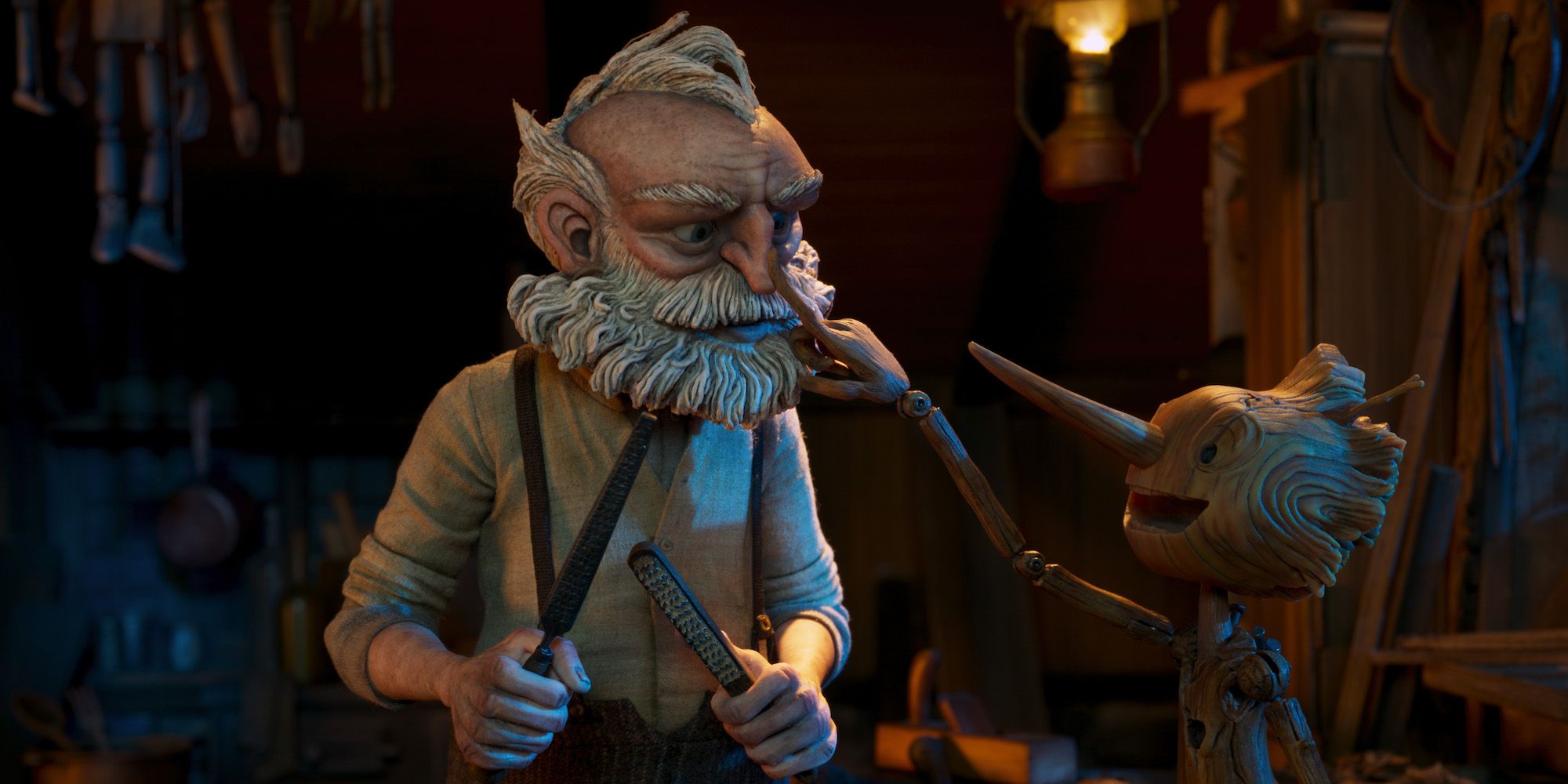Warning: This post contains major spoilers for Guillermo del Toro’s Pinocchio
Guillermo del Toro’s Pinocchio is finally streaming on Netflix, but this story about the wooden puppet is much darker than the Disney version audiences have come to know. Directed by del Toro and Mark Gustafson, the stop-motion animation was in development for several years before Netflix acquired Pinocchio in 2018. Since the film also follows Pinocchio’s journey, the comparisons to Disney’s iteration of the story, and especially because the latter’s live-action film released just months before del Toro’s, are hard to avoid despite the two being almost nothing alike beyond the surface.
Del Toro’s Pinocchio is so much darker than Disney’s version because it deals with realism, including youth camps where children are taken to be indoctrinated and trained to use weapons. The film is set between World War I and World War II, and the inclusion of Benito Mussolini automatically makes for a far grimmer story. Netflix’s Pinocchio tackles grief, death, exploitation, and fascism and, though there is hope and levity embedded within the tale, it also contains more gruesome elements and scenes than Disney’s iteration, which, while including dark moments, is much lighter than del Toro’s Pinocchio. But the film’s darkness isn’t the only thing setting it apart from Disney’s version of Pinocchio.
GDT’s Pinocchio’s Biggest Differences To Disney’s Version

Besides being about Pinocchio and including original songs written for each respective film, del Toro’s version is starkly different to Disney’s. Whereas the latter was originally a 2D animation, Netflix’s Pinocchio is a stop-motion animation, which sets it apart. Disney’s iteration of the classic story is about Pinocchio’s attempts at being good so that he can realize his dreams of being a real boy. Both the original animation and Disney’s live-action versions are about obedience, whereas del Toro’s Pinocchio centers disobedience as a path toward being one’s true self.
Del Toro’s Pinocchio is also a lot darker than Disney’s, with the stop-motion animation set during the interwar years; the Disney version’s setting is less clear. The former goes so far as to include Benito Mussolini, then the fascist leader of Italy, and the youth camps that indoctrinated young boys to fascism and war. While Disney’s Pinocchio saw young boys turn into donkeys and sold, which is also pretty disturbing, del Toro’s iteration blends fantasy with reality to bring together the themes about fathers and sons. What’s more, it showcases how the expectations of fathers for their sons can be especially harmful.
Yet another difference between the films comes in the form of the Blue Fairy. In both Disney’s animated film and its live-action counterpart, the Blue Fairy is portrayed as an almost angelic figure who appears to grant Geppetto’s wish. In del Toro’s Pinocchio, the Blue Fairy is a Wood Sprite, a supernatural being who, of her own accord, gives Pinocchio life so that Geppetto is never alone again, having taken pity on the woodcarver after Carlo’s death. To that end, Disney’s live-action film alludes to Geppetto having had a son, but never confirms it; del Toro’s Pinocchio turns the loss of Geppetto’s son into a throughline that affects the wooden puppet deeply.
And while the cricket still acts as Pinocchio’s guide, del Toro’s version of the character isn’t called Jiminy Cricket, but Sebastian J. Cricket, a creature who writes and is also granted a wish by the Wood Sprite, as opposed to Geppetto making a wish as in Disney’s version. Though del Toro’s Pinocchio does include a nefarious puppet master, it is Count Volpe, not Stromboli, who convinces Pinocchio to join him, and who is arguably more terrible than Disney’s version. There is also the fact that Pinocchio dies several times in del Toro’s film, returning to life each time after interacting with Death.
Why GDT’s Pinocchio Is So Different To Disney’s Version

Though both versions of Pinocchio are based on Italian author Carlo Collodi’s 1883 novel, the beauty of adaptations is that they can follow the story’s main premise while including fresh ideas that stand apart. Guillermo del Toro’s Pinocchio followed its own path; to replicate Disney’s version of the story would have been unimaginative and dull. And since Disney doesn’t own the rights to Pinocchio’s story, del Toro could change plenty of the details, expand upon, or add plot points and characters to make it stand apart.
Del Toro chose to tell a new story — one about disobedience, fatherhood, and the latter’s connection to fascism. The filmmaker’s fresh take on the Pinocchio narrative avoided the risk of replicating something that was already done. In this instance, Pinocchio can be compared to Cinderella. Each adaptation maintains the core premise, but the changes to each adaptation make it unique. The acclaimed director saw the opportunity to tell a different side to the story without foregoing on what made it universal and everlasting.
Why It’s Good Del Toro’s Pinocchio Is Much Darker Than Disney’s

Disney’s live-action Pinocchio avoided certain aspects of the 1940 animated classic, as well as the darker elements of the original novel, sanitizing the overall story of the wooden puppet. By being darker than Disney’s Pinocchio, Guillermo del Toro’s film explored themes, emotions, and character nuances that a more lighthearted film might have avoided. It also keeps in line with the original adventures of Pinocchio, which were dark and grew even more so over time. What’s more, del Toro’s Pinocchio only worked because the story dealt with the grimmer aspects of life.
Foregoing the topics of bitter and expectant fathers, death, disobedience, and the violence fascist ideology breeds would have been a disservice to the film’s vision. This version of Pinocchio needed to be as dark as it is because it is the nature of the story, and its gruesome elements are a key component of the tale, which are used to make a point. The stop-motion animation’s darkness ultimately allows for more depth and dissection of human behavior, developing Pinocchio beyond a cautionary tale. It elevates the film, creating a dialogue between it and the audience. The dark elements of del Toro’s Pinocchio make a statement that might have been overshadowed without them.




